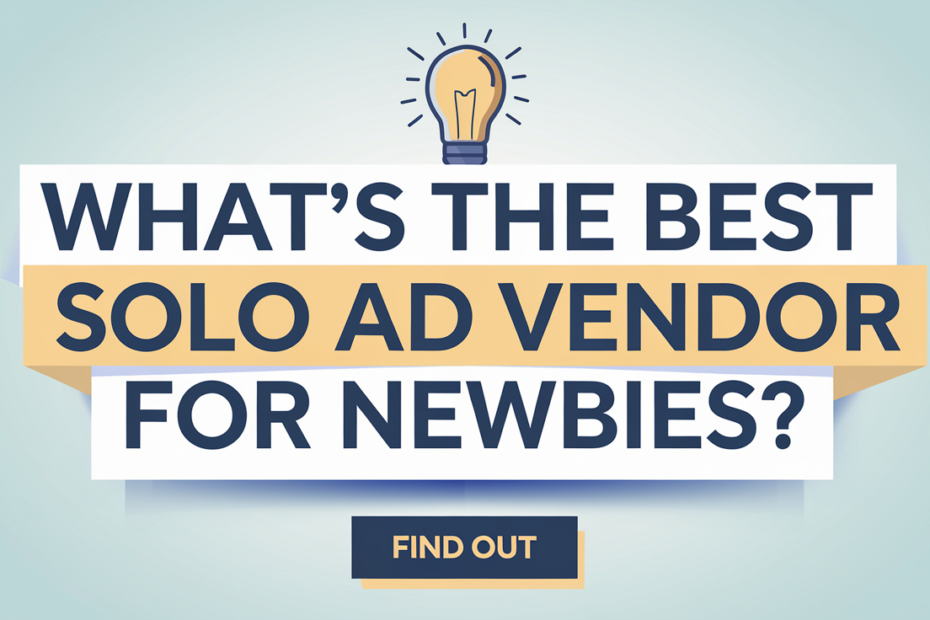Table of Contents
Introduction
In the world of online marketing, solo ads have become a powerful way to drive targeted traffic to offers. But many marketers struggle with creating emails that convert. A poorly crafted solo ad email can waste your budget and deliver little to no results.
In this guide, you’ll learn how to create high-impact solo ad emails that engage readers, build trust, and drive action.
Understanding Solo Ads
The Power of Email Marketing
Email marketing remains one of the most effective digital marketing channels, boasting a high return on investment (ROI). Solo ads leverage this power by allowing businesses to tap into pre-built, highly engaged email lists.
How Solo Ads Work
Solo ads involve purchasing email traffic from a vendor who sends your message to their subscribers. Instead of waiting to build your own list, you gain instant access to a warm audience.
Benefits of Using Solo Ads
- Quick and scalable traffic
- Access to niche-specific audiences
- No need to build your own email list
- Higher conversion potential with the right messaging
Preparing for Your Solo Ads Campaign
Before crafting your email, it’s essential to plan strategically.
Defining Your Target Audience
Who are you trying to reach? Define your ideal customer’s:
- Demographics (age, gender, location)
- Interests and pain points
- Buying behavior
Researching Solo Ad Vendors
Not all vendors are equal. Look for:
- Positive reviews and testimonials
- High engagement rates
- A track record of delivering quality leads
Setting a Budget
Start small, test, and scale. Your budget should align with expected conversions.
Crafting High-Impact Solo Ads Emails
Writing a Compelling Subject Line
Your subject line determines whether your email gets opened or ignored.
Importance of Subject Lines
- 47% of recipients decide to open an email based on the subject line alone.
- It should create curiosity without being clickbait.
Examples of High-Converting Subject Lines
- “💸 The $100 Retirement Wealth Solution!”
- “Are You Missing Out on This Passive Income Stream?”
- “Unlock a New Income Stream While You Sleep”
Creating an Engaging Email Body
Your email must be clear, persuasive, and structured for readability.
The Importance of Clarity and Relevance
- Keep it short and to the point.
- Speak directly to the reader’s needs.
Using Persuasive Copy
- Address a pain point.
- Present your offer as the solution.
- Use social proof to build credibility.
Structuring the Email for Maximum Engagement
- Hook the reader in the first line.
- Break up text for readability.
- Use simple, conversational language.
Crafting a Strong Call-to-Action (CTA)
Your CTA is where conversions happen.
What Makes an Effective CTA?
- Clear and action-oriented
- Creates urgency
- Stands out visually
Examples of Compelling CTAs
- “Claim Your Spot Now”
- “Get Instant Access”
- “Join the Movement Today”
Personalization and Trust Building
Adding a personal touch can boost conversions.
Using the Recipient’s Name
Personalized emails see higher engagement rates.
Establishing Credibility
Mention achievements, media features, or industry recognition.
Adding Testimonials or Social Proof
Quotes from satisfied customers help build trust.
Optimizing for Higher Conversions
Keeping Emails Mobile-Friendly
Over 60% of emails are opened on mobile devices. Use:
- Short paragraphs
- Large, clickable buttons
A/B Testing Different Elements
Test variations of:
- Subject lines
- Email copy
- CTA placement
Avoiding Spam Triggers
- Avoid excessive capitalization and exclamation marks.
- Don’t use spammy words like “free money” or “guaranteed income.”
Tracking and Analyzing Results
Key Performance Indicators (KPIs) to Monitor
- Open rate
- Click-through rate (CTR)
- Conversion rate
Adjusting Strategy Based on Analytics
If open rates are low, tweak the subject line. If CTR is weak, refine the CTA.
Common Mistakes to Avoid
Overly Salesy Emails
Focus on value, not just selling.
Not Testing Before Sending
Send test emails to check formatting and deliverability.
Using Vague or Misleading Subject Lines
Clickbait leads to unsubscribes and spam complaints.
Conclusion
Creating high-impact solo ads emails requires strategy, persuasive writing, and constant optimization. By crafting engaging subject lines, compelling email copy, and strong CTAs, you can maximize your conversions and get the most out of your solo ad campaigns.
FAQs
1. How do I find the best solo ad vendors?
Look for vendors with strong reviews, proven results, and niche-specific lists.
2. How much should I spend on a solo ad campaign?
Start small (around $50-$100), test results, and scale based on performance.
3. What is the ideal length for a solo ad email?
Keep it between 150-300 words—short, engaging, and to the point.
4. How long does it take to see results from solo ads?
Results can be immediate, but consistent testing and optimization improve long-term success.
5. Can solo ads be used for any type of business?
Yes, but they work best for digital products, affiliate marketing, and lead generation.
